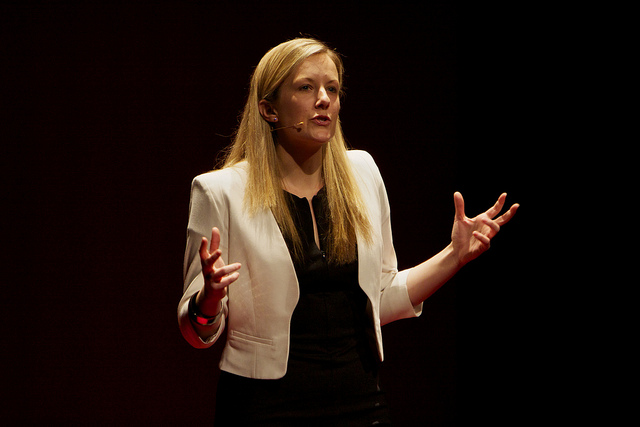
Julie McKay is the Executive Director of the Australian National Committee for UN Women. UN Women advocates for women’s economic empowerment, leadership and participation in public life, and gender equality in international development, and it also campaigns for the elimination of violence against women. Right Now speaks to Julie McKay on critical gender issues facing Australia and the Pacific region.
Right Now: You have been in your role as the Executive Director of the Australian National Committee for UN Women (previously UNIFEM) since 2007. In the eight years leading the organisation, how have you seen gender equality evolve in Australia and the Pacific region?
Julie McKay: The first thing to say is that there has been significant progress in gender equality in Australia and the Pacific. When UN Women talks about gender equality, we’re assessing women’s access to leadership roles and decision-making, women’s access to economic empowerment and economic security, and violence against women. It is through these three measures that UN Women assesses its progress in the gender-equality space
In Australia, we have definitely seen progress in the number of women on boards and the number of women taking up senior leadership positions in organisations, and to me that does indicate progress in gender equality.
Equally in the Pacific we’ve seen incremental increases in the number of women being elected to parliament and a number of women taking up leadership opportunities.
On the economic security front it’s a bit more of a disappointing picture. In most countries we’re seeing the pay-equity gap either widen or remain the same, and while we have seen some increases in women’s access to paid employment, a lot of the progress of the Pacific has been in family businesses where incomes are not secure. In Australia there is frightening data which indicates that women are working more hours in the paid workforce, but haven’t decreased the number of hours that they are working at home – so the “double burden issue” for Australian women largely remains the same.
In regards to violence against women, in Australia we have seen the higher rates of females deaths at the hands of a partner than I think we’ve ever had before, which suggests we have a very serious issue that needs to be addressed in the policy and legal justice frameworks. In the Pacific there has been some progress with data collection of violence against women, but at the current rate of progress, gender equality by anyone’s definition is a very long way away.
Domestic violence has become one of the most serious social policy issues facing Australia. What do you see as the most crucial area of policy reform in relation to violence against women?
I think the key issue in this space is to focus on prevention. There is a lot of confused language around violence against women that focuses on reducing violence against women, raising awareness of violence against women, or even eliminating violence against women. But there is not a lot of dialogue in Australia about prevention and what that actually means and looks like.
What we know from research is that there is not a lot of evidence showing that awareness-raising leads to prevention. The more aware communities are, the more campaigns that are undertaken. This might mean that people are better bystanders, and it might also mean that they are very quick to support colleagues, friends or family members who experience violence. But ultimately it is very unlikely that this reduces and prevents violence from occurring.
What we know does prevent violence against women is investment in improving the overall status of gender equality in communities, where women have more positions of authority and power, are more involved in the policy-making process at the highest level, and have independent economic and financial security.
What is heartening is that the business community is starting to recognise that violence against women is a workplace issue. The corporate world is becoming aware that women experiencing violence are largely in the workforce; and likewise, most of the people perpetrating violence against women are also in the workforce. Thankfully we are starting to see recognition in the private sector that violence against women is a workplace issue that it needs to be taken seriously by employers. However overall, what we really need is a well-resourced service sector and investment in women’s leadership and access to economic security and stop focusing on awareness-raising as a means to address the issue.
In April this year, Women on Boards released its 2015 Boardroom Diversity Index, and found that out of the ASX300 companies, 81 of these companies had no women on their boards. What do you see as key factors in increasing the numbers of Australian women on boards and in leadership roles?
For me it’s disappointing to see the numbers of Australian women on boards as low as they are. The fact that we are celebrating 20 per cent [as the percentage of women on boards] is just embarrassing. We live in a country where 60 per cent of the people graduating from university are female, but the fact that only 20 per cent of those people only ever make it to boards is a sign that our process is broken.
“There is simply no evidence of any country anywhere in the world that has made gains on gender equality and women’s leadership without legislated quotas in place.”
What we [the National Committee for UN Women] are trying to contribute when talking about this issue is that there is actually no evidence base behind the “merit-based” approach. There is simply no evidence of any country anywhere in the world that has made gains on gender equality and women’s leadership without legislated quotas in place. I feel like we’re shooting around in the dark trying to find a solution that everyone is comfortable with, rather than accepting that what works is a solution that people actually aren’t comfortable with. That is to say, legislative quotas for companies and political parties that will prompt them to step up and put in 30-40 per cent of their candidates and representatives as females.
In the World Economic Forum Global Gender Gap Report, of the top 10 best-rated countries in the world to be a woman, all of those countries currently have, or have had, legislative quotas for women in leadership roles. We need some courageous leadership from the Australian government to implement legislative quotas, and people will observe how quickly things can change when there are requirements and accountabilities placed on business leaders.
However, I am also willing to accept that there is not a lot of government will and support in this area. Pending quotas not being politically palatable, I think every Australian organisation needs to have publicly-reported targets that hold their leadership teams accountable, so that their gender targets directly impact their bonuses.
You recently wrote an article challenging the notion of “merit” in workplace recruitment. You argue that employers make a range of different assumptions about the applicant that are not strictly based on merit or previous experience. Accepting this idea, what advice can you give employers for increasing gender diversity in their workplace?
I think we all operate under an assumption that there is an objective meritocracy that exists in the workplace. We often hear a dialogue from women, stating that they don’t want to progress simply because they are a woman, and that they want to progress on merit. Equally, employers often state that from their perspective, recruitment isn’t a gender issue – it’s about picking the best candidate for the role.
The National Committee for UN Women is seeking to challenge this notion of meritocracy and that you are able to pick that best candidate objectively. What research and experience tells us is that there are a lot of reasons why employers pick certain candidates. A huge part of this rationale is about people’s perception of potential and of organisational fit. Linked into these two factors are a huge amount of subjectivity about who you like to work with, who will fit in, or who will work the way you do and not challenge you too much.
The message we are sending to workplaces is to stop talking about your organisational processes as having some sort of objective assessment of skills. Employers need to start having a conversation about what their organisation needs. For most organisations in Australia that need is diversity of thought, diversity of ideas, diversity of background, and an assessment of their risk profile. If diversity was considered as the main starting point for recruitment processes and decisions, this really throws the merit process on its head.
I think we all hide behind this idea that we were the one person who was hired objectively on merit because we’re just so uncomfortable with this idea that there are so many other factors that are considered in recruitment processes. I have been out publicly over the past few weeks talking about how I wasn’t the most experienced candidate for my role as Executive Director of the National Committee for UN Women. However, a lot of other factors were considered in my recruitment – for example, one of my mentors was on the board, and I was willing to accept the salary conditions. These were just some of the factors that were considered that played into why I became the preferred candidate for the role.
In what way do you see gender equality changing in Australia over the next 10 years?
It’s a very good question, and for me there are a few things to consider. The first is whether men are willing to have a different conversation about privilege and power. If more men are willing to take up more unpaid responsibilities in the home and to work flexibly, this can set a precedent and a more accepted attitude that it’s okay for all people in the workforce, regardless of gender, to work according to their specific circumstances. (Editor’s note: Right Now has explored this issue here.)
We all tend to look at government and the private sector to take action on this, but at the end of the day it is the behaviour of individuals that can prompt a change in this area.
Other issues to consider are whether or not the government is courageous enough to implement legislative quotas for women on boards and in leadership roles. If we continue to only make incremental progress, we’ll be pretty frustrated when we’re at 22 per cent women on boards, and the pay gap has only increased to 82 cents in the dollar. A legislative intervention is now needed in Australia.
The other aspect I would to see changed is increased investment in gender equality issues. Women’s issues and gender equality tend to be seen as “micro” issues, but the investments that we make in these issues are intractable problems that impact 51 per cent of our population directly, and the other 49 per cent of the population indirectly. What we need to change is the fundamental structure of our country and really look at some of those “macro” areas of policy.
The final point I’d make is around the aid budget and its impact of gender equality in the Pacific. The advancement of gender equality here is directly related to how much Australians – individually as donors and the federal government– invest in the promotion of equality for women. What we’re seeing is a wind back of these investments and it is becoming very dangerous.


